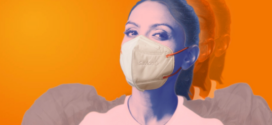You must have seen people with misaligned eyes. This condition is commonly called squint or strabismus. In this condition, the patient’s eyes face different directions and appear to focus on different objects simultaneously. The direction of the eyes may be inward, outward, upward, or downward.
Squinting is commonly observed in children under three, but adults are also at risk of developing this eye condition.
So, let’s develop a better understanding of squint types, causes, symptoms, diagnosis, and treatment options through this blog.
Different Types of Squint and Its Symptoms
Strabismus is of various types, and here are the most common ones:
- Accommodative Esotropia
Accommodative esotropia is an eye condition where one or both eyes turn inwards. Inward turning of eyes occurs if you have untreated farsightedness and 1`family history. Your eyes comfortably see the objects where your eyes point naturally. Trying to look at things from a distance may cause your eyes to turn inward.
Double vision, closing or covering of one eye, and decreased binocular vision (the ability of eyes to work together) are some of the common symptoms of accommodative esotropia.
- Intermittent Exotropia
Under this type of eye condition, one of your eyes focuses on any object while the other turns outwards. This type of strabismus develops in the early stages of your life. If left untreated, it worsens over time.
The symptoms of intermittent exotropia include headaches, reading difficulty, double vision, or eye strain. When you try to see distant objects or face bright light, one of your eyes close, which is also one of its symptoms.
If strabismus is observed in infants, it is called infantile strabismus. It occurs in infants before six months of age.
What are the Causes of Squint?
Squint or strabismus occurs due to several reasons, which are as follows:
- Genetic reasons
- Premature birth
- Brain injury
- Uncorrected refractive errors
- Medical disorders like diabetes and overproduction of thyroid hormone (Graves’ disease)
- Eye disorders, including cataracts or glaucoma
- Neurological disorders like excess fluid in the brain (Hydrocephalus)
Diagnosis of Squint
To diagnose the type of squint, eye specialists conduct a complete eye examination and analyze the focus and eye movements. Along with ophthalmologic examination, there are certain tests performed, including:
- Retinal Examination: It is done to identify the retinal condition by dilating the pupil of your eye. When it enlarges, it gets easier for your eye specialist to look for any potential damage.
- Visual Acuity Testing: This test checks your vision by reading letters from the eye chart at a distance. With this test, your eye specialists quickly observe any notable changes in your vision.
- Corneal Light Reflex: This test is also called the Hirschberg test, done to identify how light reflected from the corneas of the eyes. Usually, this light reflection must be equal in both pupils and if eye specialists detect any difference, this indicates strabismus.
- Cover/Uncover Test: Eye specialists perform this test to identify the direction and movement of your eyes using an opaque or translucent occluder. The occluder is placed in front of one eye and removed after a few seconds. This helps in the determination of misalignment of your eyes.
How is Squint Treated?
The expert professionals of Dr Agarwals Eye Hospital carefully treat strabismus. Treatment options include:
- Contact Lenses or Eyeglasses
If you have untreated refractive errors (myopia, hypermetropia, presbyopia, or astigmatism), doctors recommend correction glasses or glasses to reduce your efforts of focusing on objects.
- Patching
Patching is usually performed to treat lazy eye or amblyopia (a condition in which one of the eyes gets weak during infancy or childhood) if you develop this problem along with strabismus.
- Eye Exercises
Eye exercises or orthoptics are effective in treating particular types of squint conditions like intermittent exotropia. \
- Certain Medications
Our doctors may recommend eye drops or ointments depending on your squint eye condition. Moreover, Botox injections are also effective in treating squint eyes as they can relieve overactive eye muscles.
- Surgery
If medications don’t work, doctors perform squint surgery. They use surgical methods to correct the length and position of your eyes to align them properly.
Generally, people may think that strabismus has no cure, but it has definitive treatment options. If you don’t treat this eye condition timely, it brings associated eye problems as you age, which may include retinal detachment and permanent vision loss.
If you observe any symptoms of squint, like difficulty in reading or double vision, you can visit Dr Agarwals Eye Hospital. Their team is highly devoted to offering effective squint surgery options to normalize your vision difficulties. With their latest facilities and advanced equipment, you get comprehensive care for different eye problems.
If you see any child in your family or acquaintances develop strabismus, recommend them Dr Agarwals Eye Hospital right away!
 Newspatrolling.com News cum Content Syndication Portal Online
Newspatrolling.com News cum Content Syndication Portal Online





